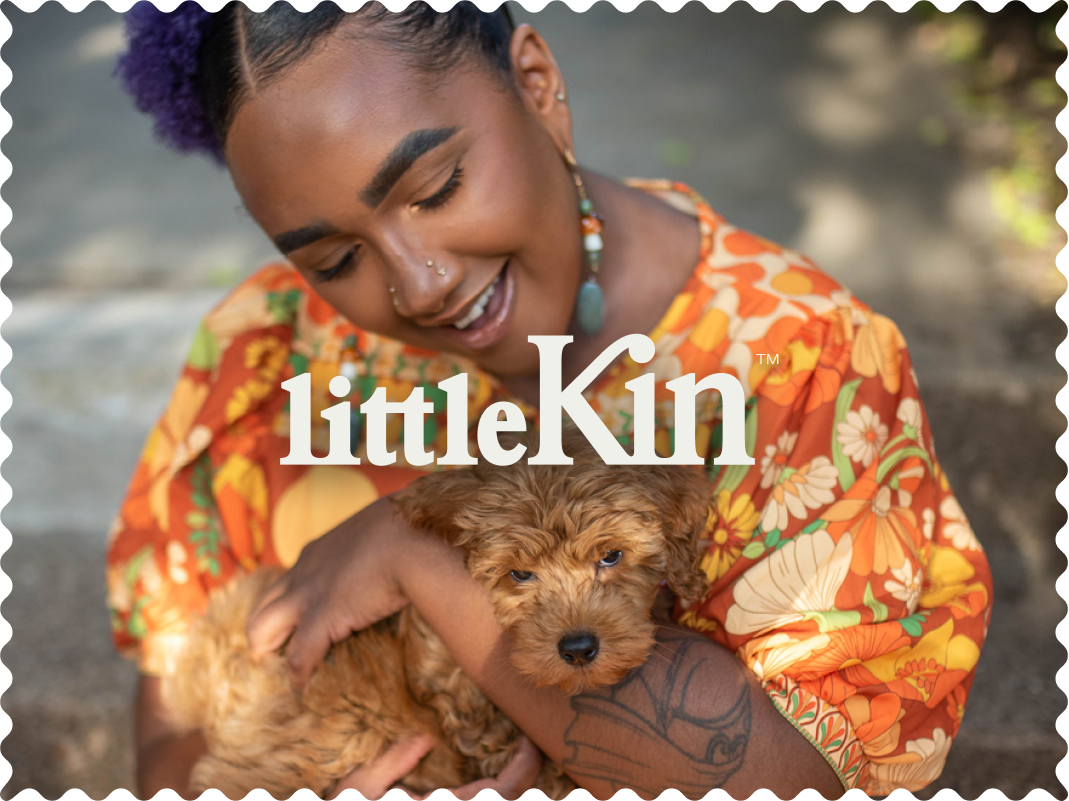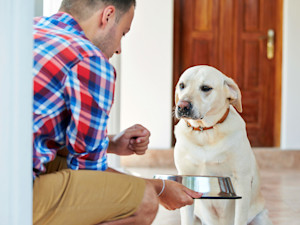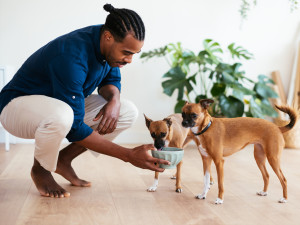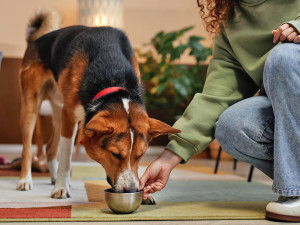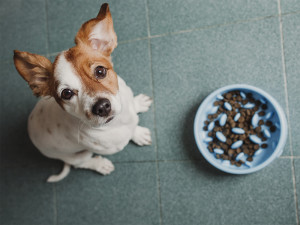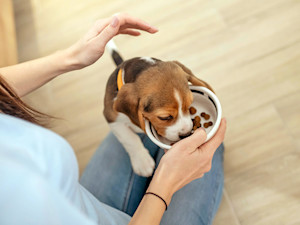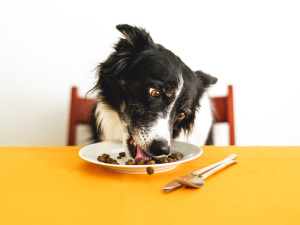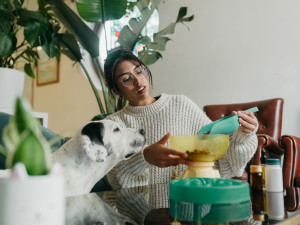What Is the Best Time to Feed a Dog?
They tell you that every time of day is eating time, but you know better.
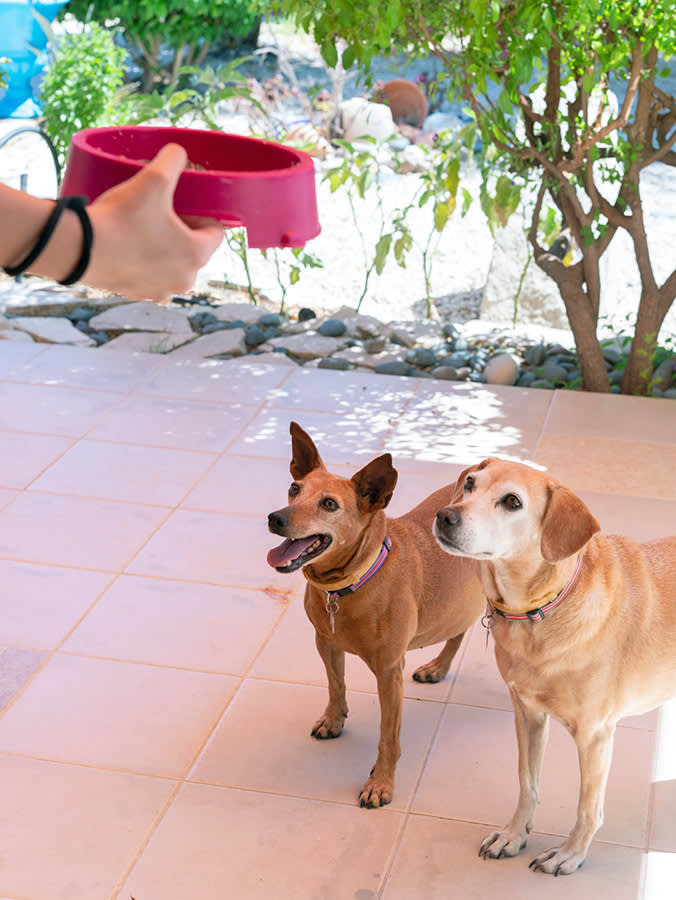
Share Article
In This Article:
Best Time to Feed a Dog: General Feeding Guidelines Best Time to Feed A Dog: Other Considerations Do Puppies Need More Meals? Feeding Small vs. Large Dog Breeds Health Considerations Frequently Asked Questions
The best time to feed a dog largely depends on their individual needs, age, and lifestyle, but most adult dogs thrive on a consistent, twice-daily feeding schedule. However, factors such as breed and specific health conditions may influence the ideal feeding times.
Best time to feed a dog: General feeding guidelines
Dogs are all about routine, and if there’s one part of their day where predictability is key, it’s mealtime. There is no specific hour of the day that dogs should be fed, but dog parents should aim to space meals about eight to 10 hours apart, with breakfast being served soon after the day starts.
How many times per day should you feed a dog?
Most dogs do well on two meals a day, which conveniently fits with many people’s work or school schedules — feed once in the morning before leaving and once in the evening after returning home. Regular mealtimes help to prevent excessive hunger and frustration that can lead to unwanted behaviors, like destructive chewing, digging in the trash, or eating things that aren’t food. Consistent feeding times also make it easier to schedule potty breaks at times when your dog is most likely ready to go.

One major contributor to how many meals a dog should eat in a day is their age. Take breed, for example. Small and toy-breed dogs will require at least two meals per day, sometimes three. Healthy, large-breed dogs typically eat two meals per day.
The amount of activity your dog gets in a day may also impact not only your dog’s feeding schedule but also the amount they eat. Dogs require a certain baseline number of calories per day, which changes based on how much activity and exercise they get daily. If your dog is active or a working dog, they may require larger and more frequent meals, while a sedentary dog will likely require less food.
Best time to feed a dog: Other considerations
When determining the best time to feed a dog, twice-a-day regimens may not fit neatly into everyone’s schedule. Maybe you work long hours or have a super early routine. Or, working from home has left you with more flexibility. Dog parents who work from home may find their pups staring at them for food a little earlier in the day than they’d like. Three meals per day is OK if your schedule allows. Just make sure that if you’re adding another meal, the total amount of food your dog eats each day doesn’t increase, too. If you’re gone for extended periods of time, a pet-sitter or an automated feeder can help make sure your dog doesn’t go too long without eating.
It's also important to consider how long a dog should go without eating. Typically, larger breed dogs can go longer periods of time without eating. In general, pet dogs most commonly eat two meals a day, morning and evening, with their daily calorie needs split up between two feedings. Some smaller and toy-breed dogs, as well as younger puppies, might require more frequent feeding, and some may require feeding as often as every two to four hours, depending on their age. Your veterinarian can help you decide on the best time to feed your dog, as well as how much.
Is it OK to feed a dog once a day?
One meal a day is not ideal for many dogs. Some dogs will develop bilious vomiting if they go too long between feedings. Bilious vomiting in dogs is a condition in which dogs vomit yellow bile after an extended period of time without food — usually the time between breakfast and dinner.
Many studies have suggested that once-a-day feeding in large-breed dogs increases the risk for gastric dilatation and volvulus (GDV). GDV, or “bloat,” is a life-threatening condition in which the stomach rotates on its axis, trapping air and fluid within it. Air continues to accumulate in the stomach with no means of escape, leaving the stomach painfully over-distended and its blood supply compromised. Symptoms of GDV include unproductive retching, restlessness, and a hard, distended abdomen. GDV is a surgical emergency, and dogs experiencing GDV symptoms should be rushed to a vet ASAP.
It’s possible that older dogs may benefit from once-a-day feedings. The Dog Aging Project is a long-term research initiative aimed at studying aging in dogs. One of the Dog Aging Project’s studies foundopens in new tab that older dogs who were fed one meal per day tended to have less cognitive dysfunction and were less likely to have certain health issues. While there was a correlation between once-a-day feeding and overall health in older dogs, there is no evidence that feeding one meal a day is the cause of greater overall health in older dogs.
Is it OK to free-feed my dog?
Feeding ad-lib, or free feeding, is not ideal for dogs because it can lead to overeating and obesity. Meal feeding makes changes in a dog’s food intake more noticeable. Free-feeding can also be challenging in multi-pet households. If one dog is happy to graze but another is a chow hound, it could lead to unbalanced intake or bickering over resources. Additionally, leaving food out all day may attract pests.
What time should I stop feeding my dog at night?
In general, the last meal of the day should be about two to three hours before bedtime. This allows enough time for digestion and a final potty break before it’s time to hit the hay. Late-night meals can lead to the need for late-night bathroom breaks.
Do puppies need more meals?
Puppies need to be fed more frequently than adult dogs. Young puppies nurse every two to four hours. Juvenile pups (up to six months of age) should be provided with three or four meals per day. "Should puppies have access to food all day?" is a common question for new puppy parents watching their pup’s rapid growth. Puppies are not good at regulating their food intake, and free feeding can lead to puppy obesity and bad eating habits. Also, because puppies need to relieve themselves after each meal, set meal times can make puppy potty training easier.
Feeding small vs. large dog breeds
Tiny dogs have a faster metabolism than larger breeds, which means they burn energy more quickly. While most healthy, adult small dogs can do well with two meals a day, toy breeds like Chihuahuas, Yorkies, and Maltese may need special consideration. Toy breed dogs can be prone to low blood sugar, especially as puppies. To keep their blood sugar levels stable, toy breeds often need five to six small meals daily as puppies and may require more than two meals per day as adults. Hypoglycemia (low blood sugar) in dogs can cause lethargy, weakness, and seizures.
Large and giant breed dogs, such as Dobermans, Great Danes, and Mastiffs, have specific nutritional needs during their growth period, which can last up to two years. These breeds are at risk for developing orthopedic issues and need to be fed a diet that has adequate calcium and phosphorus to support healthy bone development. Puppy obesity can also contribute to orthopedic issues, so puppy parents should be careful not to overfeed. As they age, large breed dogs are also at a higher risk of developing gastric dilatation and volvulus (GDV), so their daily food intake should be divided into at least two meals to reduce this risk.
Health considerations
Dogs on a weight management plan or with certain medical conditions may need adjusted feeding schedules. Health considerations that may impact a dog’s feeding times include:
Weight loss plan: Dogs may tolerate multiple small meals better than two smaller-than-usual meals when reducing food intake.
Diabetes mellitus: Insulin administration is closely linked to food intake. Diabetic dogs receiving insulin should eat very controlled meals each day, with little to no snacking between meals, and must eat before receiving insulin, or they risk becoming hypoglycemic.
Gut recovery: Small, frequent meals may be recommended for dogs recovering from gastrointestinal disease or surgery.
Megaesophagus: Megaesophagus in dogs is a condition in which the esophagus becomes enlarged and doesn’t push food into the stomach effectively. Feeding dogs small, frequent meals while they sit in an upright position helps lower the risk of regurgitation.
Pregnancy: Towards the end of a dog’s pregnancy, energy requirements are high, and space in the abdomen is limited. Multiple small meals can help ensure that a dog gets all the nutrients she needs while avoiding discomfort.
Anesthetic procedures: Dog parents are typically instructed to alter their feeding schedule before anesthetic procedures like dental cleanings and spay/neuter surgery. Fasting reduces the risk of aspiration and anesthetic complications.
Separation anxiety: A food puzzle can help dogs with separation anxiety by keeping them busy and happy while you're away. Just remember to subtract the amount of food in the puzzle from their regular meal portions.
FAQs
Is it OK to leave food out all day for grazing?
Free feeding is not recommended for most dogs because it can lead to obesity in dogs with poor self control (which is most dogs). It can lead to fighting over food or uneven food intake between housemates. Leaving food out can also attract pests.
How long can a dog go without eating?
An adult dog in good health can go a day without eating without any significant consequences. However, most adult dogs are happier and more comfortable if they are fed twice daily.
References
Bray, Emily E., et al. “Once-Daily Feeding Is Associated with Better Health in Companion Dogs: Results from the Dog Aging Project.” GeroScience, vol. 44, no. 3, 28 Apr. 2022, pp. 1779–1790, https://doi.org/10.1007/s11357-022-00575-7opens in new tab.
Bell, Jerold S. “Inherited and Predisposing Factors in the Development of Gastric Dilatation Volvulus in Dogs.” Topics in Companion Animal Medicine, vol. 29, no. 3, Sept. 2014, pp. 60–63, www.sciencedirect.com/science/article/pii/S1938973614000373, https://doi.org/10.1053/j.tcam.2014.09.002opens in new tab.
“Dog Aging Project – Longer, Healthier Lives. Together.” Dogagingproject.orgopens in new tab, 2019.
“Dilatation of the Esophagus in Small Animals - Digestive System.” MSD Veterinary Manual, www.msdvetmanual.com/digestive-system/diseases-of-the-esophagus-in-small-animals/dilatation-of-the-esophagus-in-small-animalsopens in new tab.
“Redirecting.” Elsevier.com, 2024, linkinghub.elsevier.com/retrieve/pii/S0195561606001057opens in new tab.
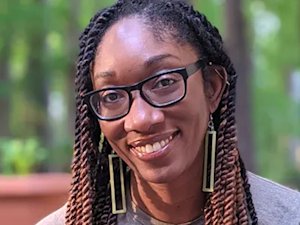
Dr. Alycia Washington, DVM, MS
Alycia Washington is a small-animal emergency veterinarian with over 10 years of experience based in North Carolina. She works as a relief veterinarianopens in new tab and provides services to numerous emergency and specialty hospitals. She also works as a veterinary writer with a focus on educating pet parents.

Dr. Gabrielle Fadl, DVM
After graduating from Kansas State University College of Veterinary Medicine, Dr. Fadl returned to the New York area to pursue a one-year rotating internship and has been working in general practice since. Dr. Fadl loves working in the pet space to foster the powerful human-animal bond. She hopes to continually learn and grow to practice the best quality medicine. Her motto is “Keep calm and try to take it as it comes.”
Related articles
Can Adult Dogs Eat Puppy Food?
They might still be your baby, but here’s why they need to eat like a grown-up.
![Puppy looks up while sitting next to a puzzle toy with food.]()
How to Slow Down a Dog Who Eats Too Fast
Plus 6 stylish slow-feed dog bowls.
How Many Times Should You Really Be Feeding Your Dog a Day?
Experts weigh in on whether eating once or twice is better for health and longevity.
![Woman feeding puppy from a bowl at home.]()
Puppy-Feeding Schedule 101
They might act hungry all day, but it’s up to you to know the facts.
![Border Collie digging into a plate of dog food while seated at a yellow table]()
How You Can Easily Manage Your Dog’s Weight
Keep your pup’s weight down, and you could add years to their life. What’s better than that?
![A woman measuring her Dalmatian mix senior dog's kibble food with a couple pill bottles on the table too in a modern looking living room]()
How Many Calories To Feed Your Dog — And A Dog Calorie Counter
How many calories does a dog need?
